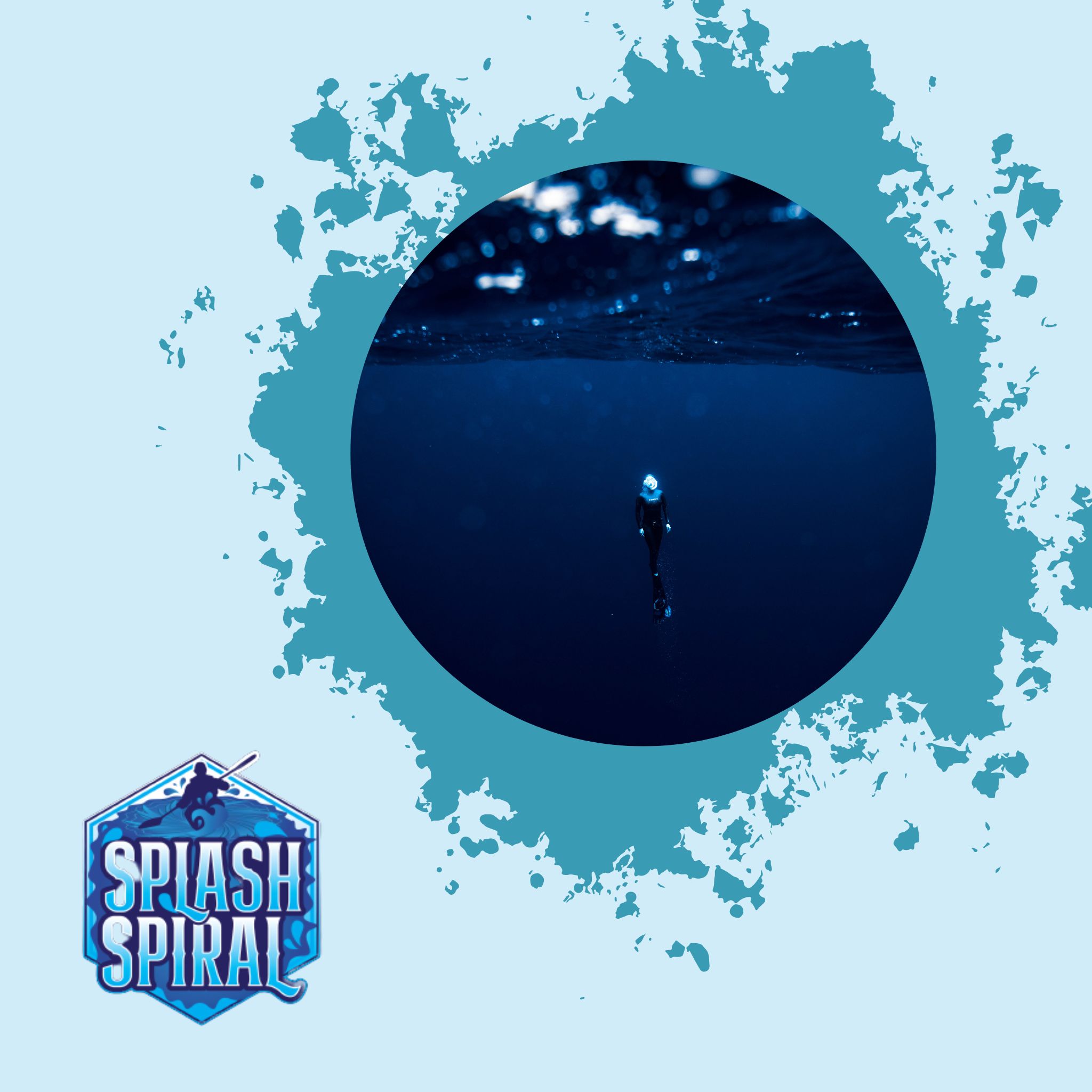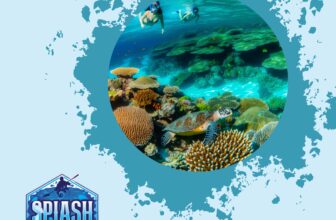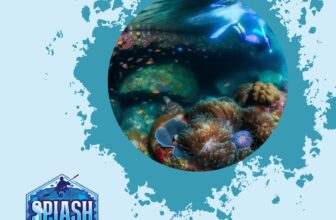
Diving is a recreational activity that has been around for centuries. It involves exploring the underwater world and observing the magnificent creatures that live in it. Open water diving is an exciting and adventurous type of diving that takes place in natural bodies of water, such as oceans, lakes, and rivers.
Definition of Open Water Diving
Open water diving refers to diving activities that take place in natural bodies of water with no overhead structure. This means that the diver has direct access to the surface at all times and can easily swim to it in case of an emergency.
It is different from other types of diving, such as cave diving or wreck diving, which involve overhead structures where divers cannot easily swim to the surface. Open water divers use scuba (self-contained underwater breathing apparatus) equipment to breathe underwater.
They typically dive to depths between 18 meters (60 feet) and 30 meters (100 feet), although some experienced divers may go deeper. Open water dives can be done independently or with a buddy.
Importance of Open Water Diving
Open water diving offers several benefits to those who engage in it. Firstly, it provides a unique opportunity for people to explore different parts of the world and see things they would not be able to see otherwise. Divers get to witness beautiful coral reefs teeming with colorful fish, explore shipwrecks, and observe marine animals up close.
Secondly, open water diving can have significant physical and mental health benefits. It provides a full-body workout while also allowing individuals to relax and reduce stress levels by disconnecting from technology and everyday life.
Open water diving fosters environmental awareness by giving individuals a firsthand look at the delicate balance between humans and nature. With this knowledge comes greater understanding about how human actions affect marine ecosystems.
Brief History of Open Water Diving
Open water diving has been around for thousands of years, with early civilizations using primitive diving techniques to gather food and explore underwater environments. However, the modern scuba diving industry did not emerge until the mid-20th century.
In 1942, Jacques-Yves Cousteau and Emile Gagnan invented the Aqua-Lung, a self-contained underwater breathing apparatus that allowed divers to breathe underwater for extended periods. This invention led to a revolution in recreational diving and made it accessible to people around the world.
Today, open water diving is a popular pastime enjoyed by millions of people worldwide. It is also an important tool used by scientists and researchers to study marine ecosystems and better understand our planet.
Basic Concepts of Open Water Diving
Equipment used in open water diving
Scuba diving is an equipment-dependent activity, and open water diving is no different. The essential items of equipment required for open water diving include a wetsuit or drysuit, fins, mask, regulator set (first and second stages), BCD (buoyancy compensator device), weight system, dive computer or gauges, and tank.
The scuba tank typically holds compressed air at a pressure of around 200 bar or 3000 psi depending on where the diver is located. Regulator set allows the diver to breathe from the tank while under water by regulating the high-pressure air and delivering it at ambient pressure through the second stage to the mouthpiece.
Buoyancy control devices
Buoyancy control devices (BCDs) are an essential component of scuba gear that allows divers to adjust their buoyancy underwater. BCDs are inflatable vests that can be filled with air from a cylinder or by direct inflation using an oral inflator.
They have dump valves that allow divers to release air from the BCD when they want to descend or ascend in the water column. Overinflated or underinflated BCDs can cause problems for divers; hence they need to learn how much air they need in their device.
Safety measures in open water diving
Diving is an inherently risky activity that requires proper training, preparation, and safety measures. Some common safety measures include using the buddy system where two divers stay together throughout their entire dive for mutual support and assistance in case of any emergency situation like getting lost underwater, running out of air supply, etc.
Decompression sickness prevention involves ensuring one does not get The bends while ascending too quickly as bubbles form in body tissues due to fast changes in pressure, leading to severe pain or even death. Emergency procedures involve training and equipping divers on how to handle unexpected situations like out-of-air emergencies, entanglement, etc.
Techniques and Skills for Open Water Diving
Breathing Techniques Underwater: The Key to a Successful Dive
The ability to breathe properly while diving is essential to ensure a safe and enjoyable experience. When underwater, the pressure increases as you descend, which can cause discomfort in your ears and sinuses.
To avoid this, it’s important to equalize the pressure in your ears and sinuses by pinching your nose gently and blowing air out through them. You should do this every few feet of depth or whenever you feel discomfort.
However, it’s crucial to avoid forcefully blowing air out, as this can damage your eardrums. In addition to equalizing pressure, proper breathing patterns are important for efficient use of air while diving.
Slow and steady breathing helps conserve air and reduces the risk of carbon dioxide buildup in the body. This technique also allows you to control your buoyancy more effectively.
Water Entry Techniques: Making a Splash with Style
Once you’re ready to enter the water, there are several techniques that can be used depending on the conditions of the dive site. The giant stride entry is one of these techniques where divers stand at the edge of a platform or boat before taking one large step forward into the water with their fins on. The backward roll entry involves sitting at the edge of a boat or platform and rolling back into the water with fins on.
There is also a cannonball entry technique where divers jump into the water from an elevated position in a ball-like shape. While these techniques may seem simple enough, mastering them takes practice since proper execution ensures minimal disturbance to marine life when entering their habitat.
Underwater Navigation Techniques: Finding Your Way Like a Pro
Navigating underwater requires skillful use of visual cues along with tools such as compasses or natural navigation skills. The use of a compass is an effective way to orient yourself underwater and maintain a sense of direction.
Natural navigation skills, such as observing the position of the sun or the contours of the seabed, can also be used to find your way. It’s important to note that accurate navigation skills are essential in ensuring you return to your starting point and avoid getting lost.
Knowledge of the dive site and surroundings is also vital for proper navigation and risk prevention while diving. Mastering these techniques and skills allows for a safe, enjoyable diving experience with minimal impact on marine life.
Proper equalizing techniques ensure pressure relief in ears and sinuses, efficient breathing patterns conserve air, while proper entry techniques reduce disturbances during entry. Underwater navigation ensures you stay on course and avoid getting lost during your dive.
Diving Environments
Open water diving is a thrilling and adventurous experience that takes place in various types of environments. The environment of the dive site determines the type of marine life, underwater terrain, and visibility. It’s crucial for divers to be familiar with the different underwater environments to choose appropriate gear to enhance their safety and enjoyment.
Tropical Waters: Coral Reefs
Tropical waters are one of the most popular diving environments due to their vast coral reefs and abundance of brightly colored marine species. Coral reefs are highly biodiverse ecosystems that support an array of marine life, including fish, turtles, sharks, octopuses, and many others.
Diving in coral reefs presents a challenge for divers since they must avoid touching or damaging it. With proper buoyancy control techniques such as hovering or frog-kicking movements, divers can navigate around them without causing any harm.
Tropical Waters: Tropical Fish Species
The abundance and colorfulness of tropical fish species make them one of the main attractions for open water divers in tropical waters. These colorful creatures include angelfish, parrotfish, clownfish (made famous by Finding Nemo), butterflyfish, lionfish (known for their venomous spines), triggerfish (known for being territorial), wrasses (known for their vibrant colors), and many more. Divers can learn about these species before embarking on their dives using online resources or field guides.
Temperate Waters: Kelp Forests
Temperate waters offer a unique diving environment characterized by kelp forests that host a diverse range of marine life such as sea lions, seals, otters, dolphins & whales among others. Kelp forests are underwater plant communities rooted on rocky substrates along shallow coastlines where strong currents bring nutrient-rich water from deeper parts of the ocean up to the surface layers which facilitate sunlight penetration hence kelp growth.
Kelp is a type of brown algae that can grow up to 100 feet tall, making it an ideal habitat for many fish and invertebrates. Divers must be mindful of the kelp’s unique properties, such as its buoyancy and entanglement considerations.
Conclusion
Open water diving offers a fascinating opportunity to explore underwater environments with breathtaking beauty and wonder. Understanding the different diving environments can enhance divers’ safety and overall experience.
Whether it’s the coral reefs of tropical waters or the kelp forests of temperate waters, divers can partake in an adventure filled with life-changing experiences and memories. It’s essential to approach open water diving with respect for the environment, ensuring that future generations have access to this stunning underwater world







